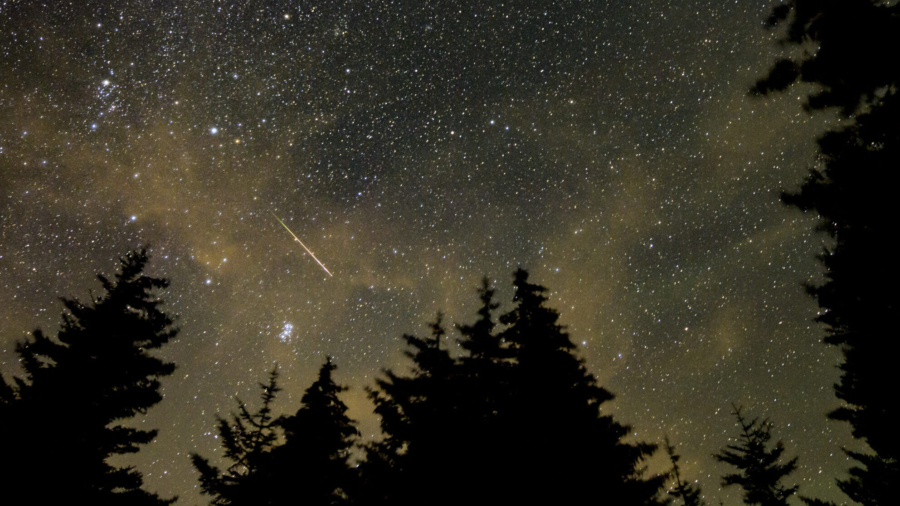A meteor shower will light up the night sky over this weekend.
The peak of the Alpha Capricornids meteor shower, which happens Saturday and Sunday while the moon is only 5 percent full, according to the American Meteor Society.
This shower isn’t very strong and rarely emits more than five meteors per hour, according to the society. However, Alpha Capricornids tends to produce bright fireballs during its peak and can be seen equally well by people on either side of the equator.
As Earth orbits the sun, it encounters the lopsided orbit of a comet, the icy surface of which leaves behind dust and rocks as they boil off from the sun’s heat. When these space rocks fall toward our atmosphere, “the resistance—or drag—of the air on the rock makes it extremely hot,” according to NASA. “What we see is a ‘shooting star.’ That bright streak is not actually rock, but rather the glowing hot air as the hot rock zips through the atmosphere.
“When Earth encounters many meteors at once, we call it a meteor shower.”
Other Space Events This Year
There are more meteor showers you can catch during the remainder of 2022, according to EarthSky’s 2022 meteor shower guide:
- Aug. 13: Perseids
- Oct. 9: Draconids
- Oct. 21: Orionids
- Nov. 5: South Taurids
- Nov. 12: North Taurids
- Nov. 18: Leonids
- Dec. 14: Geminids
- Dec. 22: Ursids
You will also be able to see five more full moons in 2022, according to The Old Farmer’s Almanac:
- Aug. 11: Sturgeon moon
- Sept. 10: Harvest moon
- Oct. 9: Hunter’s moon
- Nov. 8: Beaver moon
- Dec. 7: Cold moon
And there will be one more total lunar eclipse and a partial solar eclipse in 2022, according to The Old Farmer’s Almanac. The partial solar eclipse on Oct. 25 will be visible to people in Greenland, Iceland, Europe, northeastern Africa, the Middle East, western Asia, India, and western China.
The total lunar eclipse on Nov. 8 can be seen in Asia, Australia, the Pacific, South America, and North America between 3:01 a.m. ET and 8:58 a.m. ET. But for people in eastern North America, the moon will be setting during that time.
Wear proper eclipse glasses to safely view solar eclipses, as the sun’s light can damage the eye.
The CNN Wire contributed to this report.


